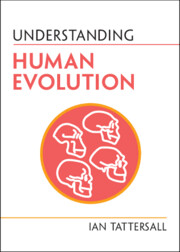Book contents
- >Understanding Human Evolution
- Series page
- Understanding Human Evolution
- Copyright page
- Reviews
- Dedication
- Frontispiece
- Contents
- Maps
- Foreword
- Preface
- Acknowledgments
- 1 Evolution
- 2 Technology: Dating, Diets, and Development
- 3 Discovery and Interpretation of the Human Fossil Record: The Early Days
- 4 Discovery and Interpretation of the Human Fossil Record: Later Developments
- 5 Early Bipeds
- 6 The Muddle in the Middle
- 7 Homo heidelbergensis and the Neanderthals
- 8 The Emergence and Spread of Homo sapiens
- Epilogue
- Summary of Common Misunderstandings
- References and Further Reading
- Figure Credits
- Index
4 - Discovery and Interpretation of the Human Fossil Record: Later Developments
Published online by Cambridge University Press: 21 July 2022
- >Understanding Human Evolution
- Series page
- Understanding Human Evolution
- Copyright page
- Reviews
- Dedication
- Frontispiece
- Contents
- Maps
- Foreword
- Preface
- Acknowledgments
- 1 Evolution
- 2 Technology: Dating, Diets, and Development
- 3 Discovery and Interpretation of the Human Fossil Record: The Early Days
- 4 Discovery and Interpretation of the Human Fossil Record: Later Developments
- 5 Early Bipeds
- 6 The Muddle in the Middle
- 7 Homo heidelbergensis and the Neanderthals
- 8 The Emergence and Spread of Homo sapiens
- Epilogue
- Summary of Common Misunderstandings
- References and Further Reading
- Figure Credits
- Index
Summary
The next major entrant into the field of postwar paleoanthropology was Louis Leakey, a flamboyant character who had been scouring his East African homeland for hominid fossils since the 1930s. One major site of interest, in what is now Tanzania, was a large erosional gulley called Olduvai Gorge. And in 1959, in the Gorge’s oldest exposed sediments (known as Bed I), Louis’s archaeologist wife, Mary, discovered the cranium of a hyper-robust australopith that had tiny incisors and canines, and huge, flat cheek teeth (Figure 4.1, right). In the same year, they named this amazing specimen Zinjanthropus boisei (it is now regarded as a Paranthropus). The Leakeys had long known that Bed I contained very simple “Oldowan” tools consisting of rock “cores” from which sharp stone flakes had been bashed using hammerstones. The Oldowan material culture (the tools are often referred to as “Mode 1”) clearly preceded anything then known from Europe; “Mode 2” handaxes comparable to those at the bottom of Mortillet’s European sequence only appeared higher in the Olduvai geological section (though the Oldowan is now known in Europe, too).
Keywords
- Type
- Chapter
- Information
- Understanding Human Evolution , pp. 51 - 79Publisher: Cambridge University PressPrint publication year: 2022

